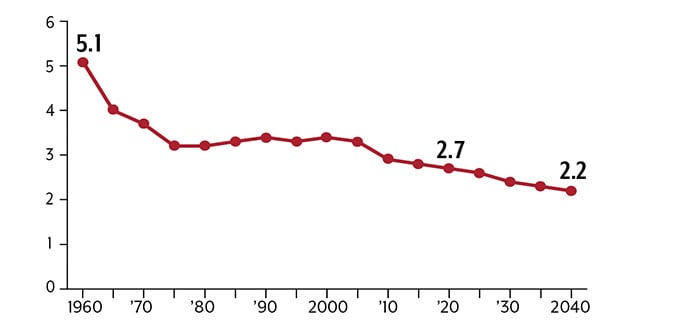Denis Doulgeropoulos
Your Financial Professional & Insurance Agent
Your Social Security Statement: What’s in It for You?
The Social Security Administration (SSA) provides personalized Social Security Statements to help Americans age 18 and older better understand the benefits they will receive from Social Security. The Statement includes details about your earnings and estimates of your retirement, disability, and survivor benefits – information that can help you plan your financial future.

As part of their annual reports to Congress, the Trustees of the Social Security Trust Funds track the program’s current financial condition and projected financial outlook. Unless Congress takes action to shore up the program, the Trustees estimate that the retirement program will have enough funds to cover full benefits only until 2033. The economic fallout from the COVID-19 pandemic is expected to bring about this day of reckoning one year earlier than previously forecast.
Report Highlights
Social Security consists of two programs, each with a separate financial account (trust fund) which holds the payroll taxes that are collected to pay benefits. Old-Age and Survivors Insurance (OASI) pays monthly benefits to retired workers, their families, and survivors of workers; Disability Insurance (DI) pays monthly benefits to disabled workers and their families. OASDI is the combined program.
A combined OASDI cost is expected to exceed total income (including interest) in 2021, and the Treasury will withdraw reserves to help pay benefits. In 2034, the combined reserves will be depleted, according to the Trustees. The payroll tax revenue alone should cover approximately 78% of scheduled benefits after that. Due to the fact that OASI and DI Trusts are separate, OASI projections are hypothetical since one program’s taxes and reserves cannot be used to fund another.
Separately, the OASI Trust Fund is expected to be depleted by 2033. The payroll tax revenue alone would then cover 76% of scheduled OASI benefits.
DI Trust Fund will be depleted in 2057, eight years earlier than estimated in last year’s report. When the trust fund runs out, payroll tax revenue alone would cover 91% of scheduled benefits.
All projections are based on current conditions, subject to change, and may not come to pass.

Proposed Fixes
We urge Congress to address the financial challenges facing these programs as soon as possible so that solutions can be more gradual, thus lessening the impact on the public. It may also be possible to soften the impact of any one of the following solutions by combining some of them.
- Raise the current Social Security payroll tax rate (currently 12.4%). The employee pays half of the 12.4% and the employer pays the other half. Self-employed individuals pay the full 12.4%. The long-range revenue shortfall would be addressed by a permanent payroll tax increase of 3.36 percentage points to 15.76% (4.20 percentage points to 16.60% if the increase began in 2034).
- Raising or eliminating the wage ceiling currently subject to Social Security payroll taxes ($142,800 in 2021).
- Increasing the retirement age beyond the current age of 67 (for those born after 1960).
- Cutting future benefits. In order to reduce the long-term revenue shortfall, scheduled benefits would need to be cut by about 21% for all current and future beneficiaries, or by about 25% if reductions were applied only to those who became eligible in 2021 or later.
- Calculating benefits using a different formula.
- Calculating the cost-of-living adjustment differently.
Pandemic Impact
Social Security’s short-term finances were “significantly affected” by the pandemic and the severe but short-lived recession in 2020, according to the 2021 Trustees Report. “Employment, earnings, interest rates, and GDP [gross domestic product] dropped substantially in the second calendar quarter of 2020 and are projected to rise gradually thereafter toward recovery by 2023, with worker productivity and consequently GDP lowered by 1%.” The projections also accounted for elevated mortality rates over the period 2020-2023 and delays in births and immigration. Payroll tax revenues are rebounding quickly, so the program did not suffer as much damage as feared.
Consumer prices rose sharply in July and August, suggesting beneficiaries might receive the highest increase in benefits since 1983 beginning in January 2022. The Social Security Administration’s chief actuary has estimated that the 2022 cost-of-living adjustment (COLA) will be close to 6.0%.1 (The official COLA had not been announced at the time of this writing.)
What are the stakes for you?
The Census Bureau has estimated that 2.8 million Americans ages 55 and older filed for Social Security benefits earlier than they had anticipated because of COVID-19.2 Many older workers may have been pushed into retirement after losing their jobs or because they had health concerns.
Within 12 months of your original application, you may withdraw your application and reapply if you regret starting your Social Security benefits earlier than planned. Nevertheless, you can only do this once, and you must repay all the benefits you received. Otherwise, if you’ve reached full retirement age, you may voluntarily suspend benefits and restart them later. Either of these moves would result in a higher future benefit.
Even if you don’t have to rely on Social Security to survive, its benefits could make up a substantial portion of your retirement income. An estimate of your monthly retirement benefit can be found on your Social Security Statement, which can be accessed when you sign up for a my Social Security account on ssa.gov. You should receive an annual statement in the mail starting at age 60 if you are not receiving benefits and have not registered for an online account.
Your retirement destiny is still in your hands, regardless of what the future holds for Social Security. Even so, it may be more important than ever to save as much as you can for retirement while you are working. Consider your retirement income strategy before you step out the door.
All information is from the 2021 Social Security Trustees Report, except for:
1) AARP, September 15, 2021
2) U.S. Census Bureau, 2021
This information is not intended as tax, legal, investment, or retirement advice or recommendations, and it may not be relied on for the purpose of avoiding any federal tax penalties. You are encouraged to seek guidance from an independent tax or legal professional. The content is derived from sources believed to be accurate. Neither the information presented nor any opinion expressed constitutes a solicitation for the purchase or sale of any security. This material was written and prepared by Broadridge Advisor Solutions. © 2021 Broadridge Financial Solutions, Inc.
